
Understanding the Concept of Bio-Couture
Bio-Couture is a groundbreaking approach to fashion that blends biology with design. Instead of using traditional fabrics like cotton or polyester, Bio-Couture focuses on creating clothes from living organisms, such as bacteria, yeast, or algae. These materials are grown in labs and then shaped into wearable garments. The process is not only innovative but also environmentally friendly, as it reduces the need for harmful chemicals and minimizes waste.
The Evolution of Fashion Towards Sustainability
Fashion has always been about change, but now it’s changing in a way that benefits the planet. In recent years, there has been a growing awareness of the environmental impact of fast fashion—cheap clothes made quickly and in large quantities. This awareness has led to a shift towards sustainable fashion, where the focus is on creating clothes that are kinder to the earth. Bio-Couture is a part of this shift. By using natural processes to grow materials, designers are finding new ways to reduce the fashion industry’s carbon footprint.
Key Innovators and Pioneers in Bio-Couture
Bio-Couture is still a new field, but it’s gaining momentum thanks to the efforts of several key innovators. One of the pioneers is Suzanne Lee, a designer who has been experimenting with growing clothes from bacteria for years. She founded the Biofabricate conference, which brings together scientists, designers, and entrepreneurs to explore the possibilities of bio-based fashion. Another notable figure is Aniela Hoitink, who creates garments from mushroom mycelium, a root-like structure that can be shaped and molded into fabric. These innovators are not just making clothes; they are reshaping the future of fashion.
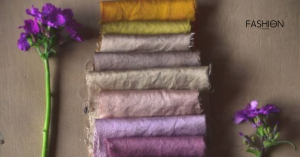
Bio-Couture is more than just a trend—it’s a glimpse into the future of how we might make and wear clothes in a way that is both innovative and sustainable. As more designers and scientists work together, we can expect to see even more exciting developments in this field.
Bio-Couture Fashion
How Bio-Couture is Redefining Fashion Design
Bio-couture is changing the way we think about fashion. Instead of relying on traditional fabrics like cotton or silk, bio-couture uses living organisms, such as bacteria, yeast, and algae, to create new, sustainable materials. This approach not only reduces the environmental impact of fashion but also opens up a world of creative possibilities. Designers are no longer limited by the textures, colors, and patterns of existing materials; they can now grow fabrics that are truly one-of-a-kind. This innovative process is pushing the boundaries of what fashion can be, making it more eco-friendly and artistically exciting.
Materials and Processes Used in Bio-Couture
The materials used in bio-couture are unlike anything found in traditional fashion. One popular material is bacterial cellulose, which is grown by fermenting a mix of bacteria and yeast. This process produces a strong, flexible fabric that can be dyed and shaped in various ways. Another fascinating material is mycelium, the root structure of fungi. Mycelium can be grown into custom shapes and has a texture similar to leather. Algae is also used to create biodegradable textiles. These materials are grown rather than woven, offering a new way to think about fashion design. The process involves carefully controlling the environment where these organisms grow, allowing designers to experiment with new textures and forms.
 Case Studies: Iconic Bio-Couture Fashion Pieces
Case Studies: Iconic Bio-Couture Fashion Pieces
Several bio-couture fashion pieces have already made waves in the fashion world. One example is Suzanne Lee’s “BioCouture” project, where she grew a jacket from bacterial cellulose. This jacket is not only sustainable but also showcases the potential of bio-couture to create unique fashion pieces. Another example is the work of designer Stella McCartney, who has been a pioneer in using eco-friendly materials. She has experimented with bio-couture techniques, such as using mycelium to create leather-like products. These pieces are not just environmentally friendly; they are also pushing the boundaries of design, showing that sustainable fashion can be both beautiful and practical.
The Future of Bio-Couture in Mainstream Fashion
Bio-couture is still in its early stages, but it has the potential to revolutionize mainstream fashion. As more designers explore these techniques, the cost of producing bio-couture materials is expected to decrease, making them more accessible. In the future, we might see bio-couture garments in everyday stores, offering consumers stylish, eco-friendly alternatives to traditional fashion. With the growing awareness of environmental issues, bio-couture could become a key part of the fashion industry, leading the way toward a more sustainable future.
Sustainable Bio-Couture Clothing
Sustainable bio-couture clothing is transforming the fashion landscape by merging science with style. This innovative approach to design focuses on creating garments from organic and biodegradable materials, such as lab-grown fabrics, algae, and bacteria. Unlike traditional fashion, which often relies on resource-intensive processes, bio-couture aims to minimize environmental impact while pushing the boundaries of creativity. By embracing sustainable bio-couture, we step into a future where fashion is not only beautiful but also responsible, promoting a new era of eco-friendly elegance that harmonizes with nature.
The Environmental Impact of Traditional Fashion vs. Bio-Couture
- Traditional fashion involves high water and chemical usage.
- Cotton production for clothing consumes significant water resources.
- Synthetic fabrics from petroleum contribute to pollution.
- Bio-couture uses living organisms to grow fabrics, reducing water and chemical use.
- This method generates less waste and has a smaller carbon footprint.
Benefits of Sustainable Bio-Couture Clothing

- Biodegradability: Fabrics break down naturally, reducing landfill waste.
- Energy Efficiency: Production process often requires less energy.
- Innovation: Offers unique materials and design possibilities.
- Environmental Impact: Reduces reliance on harmful chemicals and non-renewable resources.
Consumer Perception and Acceptance of Bio-Couture
- Growing awareness of environmental issues increases openness to sustainable fashion.
- Some consumers find the concept of bio-couture intriguing and innovative.
- Early adopters and fashion-forward individuals are leading acceptance.
- Education and exposure to bio-couture can enhance consumer acceptance.
Challenges and Opportunities in Sustainable Bio-Couture
- Challenges: High production costs, limited availability, and scalability issues.
- Opportunities: Potential for growth in eco-conscious markets, technological advancements, and expanding design possibilities.
- Innovation: Continuous development can overcome current limitations and enhance fabric functionality.
- Market Growth: Increasing demand for sustainable fashion can drive investment and research in bio-couture.
Bio-Fabrication in Fashion: What It Is and Why It Matters
bio-fabrication in fashion is a fascinating field where science meets fashion. It involves creating materials for clothing using biological processes, like growing fabric from living organisms. Here’s a simple breakdown of what it’s all about:
What is Bio-Fabrication?

Bio-fabrication is the process of making materials for clothes using natural organisms like bacteria, algae, and fungi. Instead of using traditional materials like cotton or polyester, bio-fabrication grows new fabrics. It’s like growing your own clothes in a lab, where the “seeds” are tiny living organisms.
Innovations in Bio-Fabrication
Recent innovations in bio-fabrication have introduced some incredible new materials. For example, scientists have developed fabrics from:
- Bacteria: Special bacteria can be used to produce a type of fabric that’s both strong and flexible.
- Algae: Algae can be turned into a lightweight, biodegradable material that’s great for clothing.
- Fungi: Some companies are now using fungi to create sustainable leather alternatives.
These materials are not just environmentally friendly; they can also be customized to have unique textures and properties.
Applications of Bio-Fabrication in Fashion
Bio-fabrication is starting to make waves in the fashion industry. Designers are using these new materials to create everything from stylish jackets to eco-friendly shoes. Since these materials can be tailored to specific needs, they offer new possibilities for fashion design. For instance:
- Customizable Designs: Bio-fabricated materials can be engineered to have specific colors, patterns, or textures.
- Sustainable Choices: Using bio-fabrication helps reduce reliance on traditional resources and minimizes waste.
The Role of Technology in Advancing Bio-Fabrication
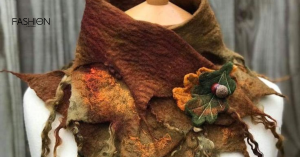
Technology plays a big role in advancing bio-fabrication. Innovations like 3D printing and genetic engineering are making it possible to create more complex and useful materials. Here’s how technology helps:
- 3D Printing: Allows for precise control over the structure of bio-fabricated materials.
- Genetic Engineering: Scientists can tweak the genes of organisms to produce fabrics with desired properties.
As technology continues to evolve, we can expect even more exciting developments in bio-fabrication.
Bio-fabrication is changing the way we think about fashion. By using living organisms to create materials, we’re opening up new possibilities for sustainable and innovative clothing. It’s a field that blends science and style, offering a glimpse into the future of fashion.
The Intersection of Art and Science in Bio-Couture
Bio-couture is a fascinating blend of art and science, where fashion meets cutting-edge technology. This innovative field is changing the way we think about clothing, merging creativity with scientific advancements.
Collaborations Between Designers, Scientists, and Engineers
In the world of bio-couture, designers, scientists, and engineers are working together to create something truly unique. Designers bring their artistic vision, while scientists and engineers provide the technical know-how. For example, scientists might develop new materials grown from microorganisms, and engineers help turn these materials into beautiful, functional clothing. This teamwork is essential for pushing the boundaries of what’s possible in fashion.
Bio-Couture as a Form of Artistic Expression
Bio-couture is more than just clothing; it’s a form of art. Designers use living materials to create garments that are both visually stunning and environmentally friendly. Imagine dresses made from fabric that grows and evolves, reflecting the beauty of nature. This approach allows designers to explore new textures and forms, turning fashion into a living piece of art.
Exhibitions and Showcases of Bio-Couture Fashion
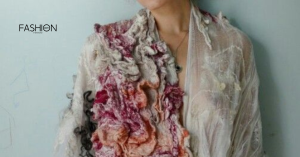
Bio-couture is gaining attention in galleries and fashion shows around the world. Exhibitions showcase these innovative designs, highlighting the fusion of biology and fashion. These events not only display the latest creations but also educate the public about the potential of bio-couture. Visitors can see firsthand how science and art come together to create clothing that’s both beautiful and sustainable.
Bio-couture is a thrilling intersection of art and science. It represents a new era of fashion where creativity meets technology, leading to exciting and eco-friendly clothing innovations.
Market Trends and Consumer Adoption of Bio-Couture:
- Current Market Trends in Bio-Couture:
- Growing interest in bio-fabrication techniques.
- Use of living materials like bacteria and algae in fashion.
- Increasing focus on sustainability and reducing environmental impact.
- How Brands are Integrating Bio-Couture into Their Collections:
- Experimentation with bio-fabricated textiles and materials.
- Use of alternatives like mycelium for eco-friendly leather.
- Showcasing bio-couture pieces in fashion collections to highlight sustainability.

- Consumer Demand for Sustainable Fashion Alternatives:
- Rising awareness of the environmental impact of traditional fashion.
- Increased preference for clothing made from living materials.
- Growing support for brands that adopt eco-friendly practices.
- The Role of Social Media in Popularizing Bio-Couture:
- Platforms like Instagram and TikTok help spread awareness.
- Designers and brands use social media to showcase bio-couture creations.
- Influencers and celebrities boost excitement and interest in sustainable fashion.
The Future of Bio-Couture
Bio-couture is shaping up to be an exciting part of the future of fashion. This innovative approach uses living materials, like bacteria and algae, to create clothing that is both stylish and sustainable. While bio-couture holds a lot of promise, it also faces some challenges.
Challenges and Possibilities
One of the main challenges is making bio-couture materials affordable and scalable. Right now, producing bio-couture on a large scale is expensive and complex. But as technology advances, these hurdles might be overcome. Researchers are working hard to make bio-couture more accessible and practical for everyday wear.
On the flip side, bio-couture offers incredible possibilities. It has the potential to reduce waste and pollution in the fashion industry. Unlike traditional fabrics, which often contribute to environmental damage, bio-couture materials are biodegradable and can be grown without harmful chemicals. This could make a big difference in how we produce and dispose of clothing in the future.
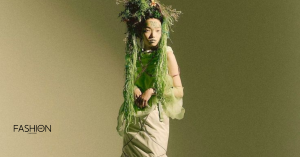
The Role in Sustainable Fashion
Bio-couture plays a crucial role in moving towards a more sustainable fashion industry. By focusing on eco-friendly production methods and materials, it aligns with the growing demand for greener fashion choices. As consumers become more aware of the environmental impact of their clothing, bio-couture provides a compelling alternative that meets these concerns.
In summary, bio-couture is an exciting development in global fashion. It represents a shift towards more sustainable and innovative practices. While there are still challenges to overcome, the potential benefits are significant. As technology and production methods continue to improve, bio-couture could become a major player in the future of fashion, helping to create a more sustainable industry for everyone.

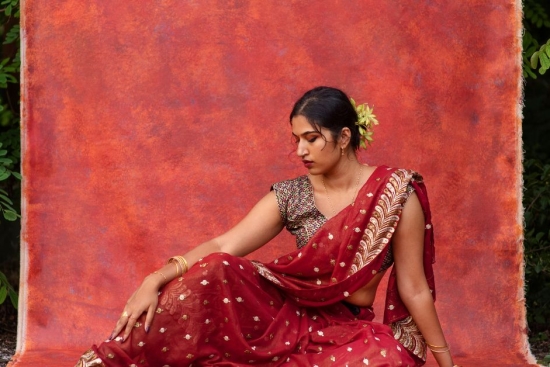




Comments (29)
nmefwngtfxsays:
24/10/2024 at 15:02Muchas gracias. ?Como puedo iniciar sesion?
finasteride 5mg price in indiasays:
17/01/2025 at 21:23Contraception 2013; 87 154 61 generic finesteride Resume normal testosterone synthesis as quickly as possible and reduce levels of female hormones estrogen, which will be higher than normal in the postmenopausal period due to increased aromatization of testosterone, i
Brianvoksays:
29/01/2025 at 15:09farmacia online senza ricetta: Farma Prodotti – farmaci senza ricetta elenco
comprare farmaci online all’estero
BradleyDotsays:
31/01/2025 at 08:23comprare farmaci online all’estero: BRUFEN 600 acquisto online – comprare farmaci online all’estero
farmacia online
ClintInicksays:
31/01/2025 at 09:40https://farmatadalitaly.com/# п»їFarmacia online migliore
migliori farmacie online 2024
Brianplodssays:
31/01/2025 at 10:15farmacie online autorizzate elenco https://farmaprodotti.shop/# comprare farmaci online con ricetta
farmacia online
Lannypersays:
31/01/2025 at 11:49High rollers receive exclusive treatment and bonuses.: taya365.art – taya365
Patricksnubysays:
31/01/2025 at 11:58Game rules can vary between casinos.: taya365.art – taya365
DavidAbonssays:
31/01/2025 at 12:43https://taya365.art/# Live dealer games enhance the casino experience.
Some casinos feature themed gaming areas.
JosephLibsays:
31/01/2025 at 14:04taya365 [url=http://taya365.art/#]taya365 com login[/url] Promotions are advertised through social media channels.
Williamamushsays:
31/01/2025 at 16:32Poker rooms host exciting tournaments regularly. http://winchile.pro/# Las apuestas mГnimas son accesibles para todos.
Lannypersays:
31/01/2025 at 16:32Las apuestas deportivas tambiГ©n son populares.: jugabet – jugabet casino
Patricksnubysays:
31/01/2025 at 16:49The thrill of winning keeps players engaged.: taya777 app – taya777 app
DavidAbonssays:
31/01/2025 at 16:56http://winchile.pro/# Las apuestas deportivas tambiГ©n son populares.
Online gaming is also growing in popularity.
DavidAbonssays:
31/01/2025 at 20:56https://phmacao.life/# Many casinos host charity events and fundraisers.
Some casinos feature themed gaming areas.
Lannypersays:
31/01/2025 at 21:25Las redes sociales promocionan eventos de casinos.: winchile – winchile
Williamamushsays:
31/01/2025 at 21:29The Philippines has several world-class integrated resorts. https://phtaya.tech/# Many casinos host charity events and fundraisers.
Patricksnubysays:
31/01/2025 at 21:46Players must be at least 21 years old.: taya777 app – taya777 login
JosephLibsays:
31/01/2025 at 22:37jugabet [url=https://jugabet.xyz/#]jugabet casino[/url] Muchos casinos tienen salas de bingo.
DavidAbonssays:
01/02/2025 at 00:49https://phmacao.life/# Poker rooms host exciting tournaments regularly.
Players enjoy a variety of table games.
Lannypersays:
01/02/2025 at 02:17Slot machines attract players with big jackpots.: taya777 – taya777.icu
Williamamushsays:
01/02/2025 at 02:23Players must be at least 21 years old. http://phmacao.life/# The Philippines has a vibrant nightlife scene.
Patricksnubysays:
01/02/2025 at 02:40Gaming regulations are overseen by PAGCOR.: phmacao com – phmacao
DavidAbonssays:
01/02/2025 at 04:31https://taya777.icu/# Players often share tips and strategies.
The casino industry supports local economies significantly.
JosephLibsays:
01/02/2025 at 06:49phtaya login [url=https://phtaya.tech/#]phtaya.tech[/url] п»їCasinos in the Philippines are highly popular.
Lannypersays:
01/02/2025 at 06:50Casino promotions draw in new players frequently.: taya777 – taya777 app
Williamamushsays:
01/02/2025 at 07:01The casino industry supports local economies significantly. http://jugabet.xyz/# Los bonos de bienvenida son generosos.
Patricksnubysays:
01/02/2025 at 07:15Visitors come from around the world to play.: taya365.art – taya365.art
DavidAbonssays:
01/02/2025 at 08:00https://phmacao.life/# Manila is home to many large casinos.
The Philippines has a vibrant nightlife scene.